Interactive Presentations
One can debate endlessly about the pros and cons of various gadgets and interactive multimedia devices, but the fact remains: in today’s world, you simply cannot do without them. The future is already here, and all we can do is adapt to the digital age by making the most of its possibilities. That is why multimedia interactive devices and installations are increasingly being used across a wide range of fields every day.
One such field is museums and exhibitions, where preserving historical materials and artifacts is crucial, yet it is equally important not to lag behind the present, 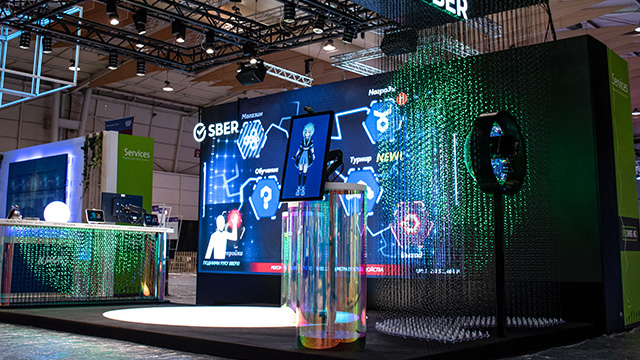 becoming outdated not only in the content but also in the ways historical material is presented. Modern museums and exhibitions are embracing digital media and devices, raising their level by incorporating multimedia solutions into cultural experiences.
becoming outdated not only in the content but also in the ways historical material is presented. Modern museums and exhibitions are embracing digital media and devices, raising their level by incorporating multimedia solutions into cultural experiences.
One of the most sought-after and truly versatile tools for delivering information via digital media is interactive presentations. Their popularity stems primarily from their wide range of applications. Interactive presentations serve as a general term for many types of information delivery, widely used in education, retail, hospitality, exhibitions, healthcare, and service industries.
Interactive Presentations in Education
Nowadays, no educational process can do without interactive presentations — from the simplest slide shows to vibrant and engaging 3D presentations incorporating virtual reality. Interactive technologies allow not only vivid illumination of lesson topics, revealing hidden details or the anatomy of organisms, but also the creation of entire systems combining multimedia screens with tablets or student computers. Such interactive classrooms are gaining popularity: teachers can assign tasks in real-time, broadcast them on a shared screen or interactive whiteboard, collaborate with students, and monitor progress immediately — without collecting notebooks as before, but by observing student work live on their computers.
This system helps students adapt better and faste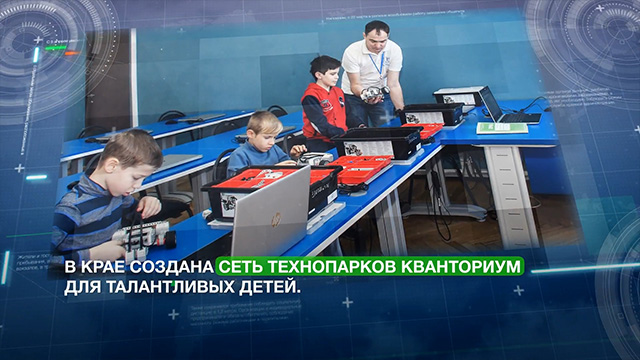 r in the classroom, complete tasks without leaving their seats, yet still showcase their work to the entire class. Moreover, this interactive approach facilitates joint discussions, edits, debates, and collaborative problem-solving — literally without leaving one’s place.
r in the classroom, complete tasks without leaving their seats, yet still showcase their work to the entire class. Moreover, this interactive approach facilitates joint discussions, edits, debates, and collaborative problem-solving — literally without leaving one’s place.
Interactive presentations are also an excellent tool for remote learning. Unlike videos, presentations are fully controllable — users can influence the order in which information is presented, select informational blocks, interact with individual elements, or change the presentation’s flow according to their preference.
Interactive Presentations in Museums
Our company has extensive experience working with museums. We have personally witnessed how the quiet museum halls transform with the introduction of modern multimedia devices, which instantly become visitor magnets. Today’s generation is deeply connected to digital technology, so information delivered through electronic media is more easily absorbed and retained. Using interactive presentations, we have told visitors about partisan detachments operating during the Great Patriotic War across various regions, showing what partisan camps looked like and how dugouts were constructed. Children and teenagers eagerly participate in quizzes embedded in our interactive presentations. With a navigation menu, users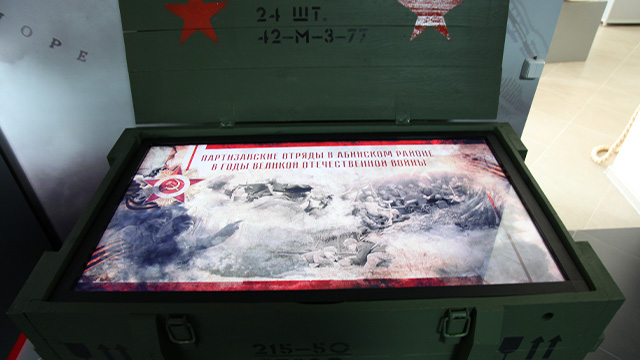 can easily switch between presentation pages, search and jump between slides, zoom in on images, and select topics of interest.
can easily switch between presentation pages, search and jump between slides, zoom in on images, and select topics of interest.
In one museum, we installed an interactive multimedia showcase — a touchscreen mounted above a display table. The screen mirrored the artifacts laid out on the table; tapping any item enlarged its image and brought up text blocks along with photos and drawings explaining how the objects were used in daily life. Long-disused antique tools and devices came back to life, with their purpose becoming clear to modern visitors. Where once only a guide could explain an exhibit — often using just gestures — now museum-goers can explore independently by simply touching the image of the item.
Interactive presentations can also be integrated into virtual tours, styled consistently and equipped with clear navigation and informative blocks. This allows users not only to explore picturesque or historical locations virtually but also to learn fascinating 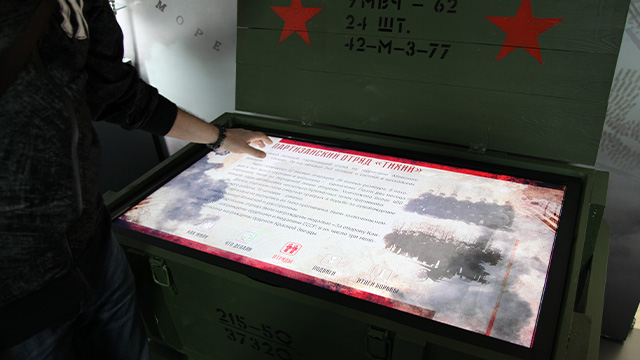 facts about them on the spot.
facts about them on the spot.
Another use of interactive presentations in museums is interactive screens — including projection screens — that respond to user interaction. Such multimedia installations serve as platforms for controlled presentations, eye-catching additions to exhibits, or simple screens to display videos, films, performances, and broadcasts.
Interactive Presentations in Cafés and Restaurants
How to attract adults to a restaurant? Make it appealing to children! For this reason, dining establishments often create play areas and rooms for children featuring various activities — from board games and toys to art supplies and multimedia devices. Interactive presentations are an excellent way to engage kids while their parents enjoy a break from the bustle. Presentations designed for children’s areas in cafés and restaurants can take the form of games, quizzes, virtual journeys, or captivating stories with vivid animated illustrations. They m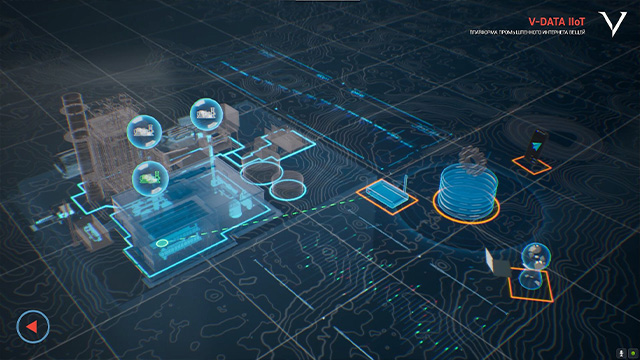 ay feature virtual assistants — who can be anything from people and animals to fairy tale characters or household objects. Simple navigation systems, large bright buttons, arrows, and pointers help children explore the presentations, turning their interaction into a fun game.
ay feature virtual assistants — who can be anything from people and animals to fairy tale characters or household objects. Simple navigation systems, large bright buttons, arrows, and pointers help children explore the presentations, turning their interaction into a fun game.
Such interactive presentations can be displayed on any multimedia device equipped with a touchscreen.
Besides entertaining children, interactive presentations can serve as menus in restaurants and cafés — replacing traditional paper or cardboard menus. Interactive menus can bring dishes to life: steam rising from plates, toppings gently dripping down delicate desserts, bubbles playfully swirling in lemonade glasses. These menus can be accompanied by detailed ingredient lists and calorie counts or by the chef’s enthusiastic descriptions of the cooking process. Informational blocks or videos can entertain guests while they wait for their orders.
The scope of interactive presentations is truly limitless. Today, they are used across numerous areas of life: multimedia screens, touchscreen tables, and kiosks appear in shops and malls, restaurants and museums, schools and universities, hospitals and clinics, public transport, train stations, and airports. We are confident that every year interactive presentations will grow even more popular as a versatile tool that solves countless problems and consistently attracts people’s attention.